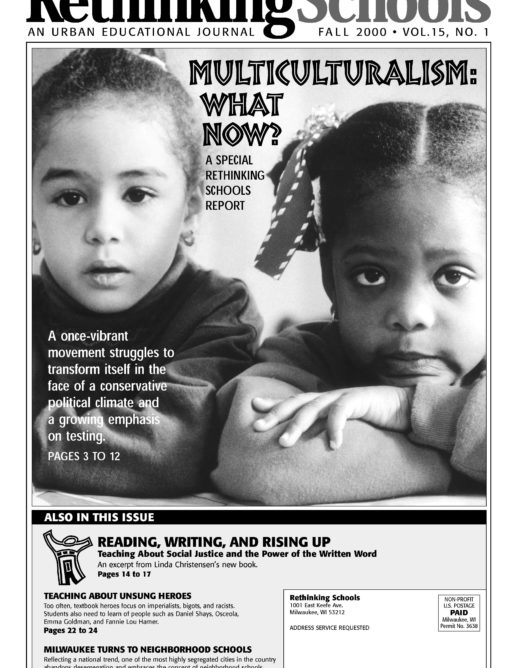Preview of Article:
Down But Not Out
White enthusiasm for multicultural, anti-racist education has waned, proponents faith in the movement's ability to endure and grow.
To be sure, most schools in the U.S. claim to be doing somethingcalled multicultural education. “The problem is, what they’redoing may not be that good,” says Priscilla Walton, a researcherat the National Center for Research on Education, Diversity andExcellence at the University of California at Santa Cruz. “Forsome, multicultural education means revolution in the classroom,and for others, fiestas and parties.”
In its early days, multicultural education was almost exclusivelydevoted to celebrating and disseminating information about a varietyof cultures. But today, multiculturalism embraces a far broadermission: changing the structure of schools to give students ofall racial groups equal access to social and academic success.In the now widely accepted words of consultant Enid Lee, truemulticultural education goes “beyond heroes and holidays.” SaysLee, “The purpose is to challenge stereotypes and include newinfor-mation that transforms the way we look at each other andourselves, and gives us the skills to deal with racism and otherforms of oppression.”
Lee prefers the term “anti-racist” education to “multicultural”education because she says the latter so often has been interpretedin a superficial way. Add-on lessons about African-American heroestaught once a year, or a few books in the classroom library writtenby authors of color, for instance, constitute no more than “frills”that are not well integrated into a school’s mission. She pointsout that while such an approach to multicultural, anti-racisteducation obviously short-changes students, it also can underminea program’s very existence. Says Lee, “The fact is, if somethingis a frill, it’s easy to cut when something else comes along.”
Lee defines true multicultural, anti-racist education as a “perspectivethat cuts across all subject areas, influencing the way we teachand what we teach about.” Such an approach calls on a teacher,for example, to look at all the materials used in a classroomwith a multicultural eye. It also requires schools to addressissues of power and justice by revisiting policies that result,for example, in a disproportionate number of students of colorbeing placed in exceptional education classes or a district’sleast experienced teachers being assigned to its most challengingschools.
Other scholars also distinguish between the varying levels ofmulticulturalism. James A. Banks, a professor at the Universityof Washington in Seattle, and director of its Center for MulticulturalEducation, sees multicultural education as a five-step processthat begins with integrating content representative of a varietyof cultures into the curriculum. But Banks’ vision of the movementalso calls for clarifying ways in which knowledge is influencedby culture, incorporating teaching strategies that boost achievementof students from diverse backgrounds, and modifying students’racial attitudes. The best programs, he says, also “empower schoolculture” by examining and modifying policies in order to ensurefairness to all.</p

